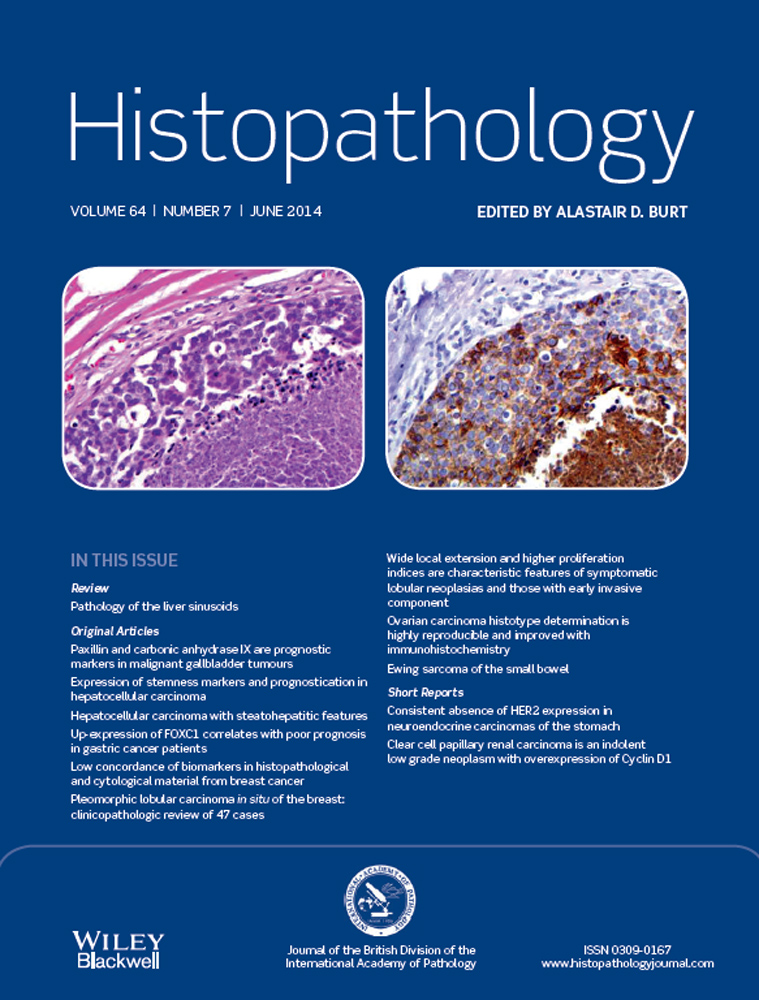Hepatocellular carcinoma with steatohepatitic features: a clinicopathological study of Japanese patients
Abstract
Aims
The aim of this study was to investigate the clinicopathological significance of steatohepatitic features in hepatocellular carcinomas (HCCs) using a large-scale analysis.
Methods and results
Retrospective clinicopathological analysis was performed on HCCs treated surgically at the University of Tokyo Hospital between 2005 and 2010. The diagnosis of HCC with steatohepatitic features (SH-HCC) was made if the tumour fulfilled four of the following five criteria: steatosis (>5% tumour cells), ballooning or Mallory–Denk body formation, interstitial fibrosis and inflammatory infiltrates. There were 120 HCCs (31.4%) from 106 patients (36.3%) that met the criteria of SH-HCC. Patients with SH-HCC were characterized by a higher frequency of diabetes mellitus and hypertension, along with higher serum levels of cholesterol and triglycerides, than those with conventional HCC (P < 0.01). The background liver of SH-HCC patients showed steatosis and steatohepatitis more frequently (P < 0.01). SH-HCCs were smaller, relatively more differentiated and had a higher frequency of bile duct invasion (P < 0.05). Multivariate analysis failed to show prognostic significance of steatohepatitic features in HCCs.
Conclusions
SH-HCC is a subcategory of HCC associated with the patient's metabolic condition and the presence of steatosis or steatohepatitis in the background liver. Steatohepatitic features were not a significant prognostic factor for HCCs.




